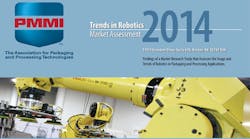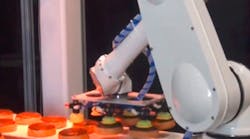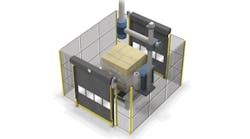Robots are moving up the production line from palletizing to processing and depalletizing, say respondents to the newest business intelligence study by PMMI, The Association for Packaging and Processing Technologies. According to the “Trends in Robotics Market Assessment 2014” report, participants in this study anticipate the following developments will redefine the role robotics play in manufacturing operations:
- Sanitation improvements will allow for direct contact with food;
- Spatial awareness that keeps workers adjacent to the robot safe
- Lower costs that will make robotics more pervasive
- Vision sensors that allow even greater precision and handling — even giving robots the ability to sort by color
- Faster speeds and heavier lifting capabilities
The 100 interviews conducted for the study — in-depth conversations with original equipment manufacturers (OEMs), integrators, robot suppliers and industry experts — revealed shifts in robotic use, as well as expected benefits. These developments are resulting as much from increased usage as they are from advancements in hardware and software, according to Paula Feldman, director, business intelligence, PMMI.
“What we heard in our interviews mirrors much of what we’ve been seeing at PACK EXPO,” she says. “When we studied the robotics marketplace in 2008, only 20 percent of manufacturers used robots to package their products. Today, 75 percent of end users use robotics at some point along their manufacturing lines, and the capabilities for food and pharmaceutical processing are game-changers.”
And, although robotics are integral to replacing manual labor and reducing operating costs, they’re also creating new job opportunities. The manufacturing worker of tomorrow will need to have a higher level of technical training to design, integrate, operate and maintain robotic technologies.
“Expect to see growth in job functions such as integration services, mechatronics engineering, robotic training and operating, and PLC and servo programming,” Feldman says.





